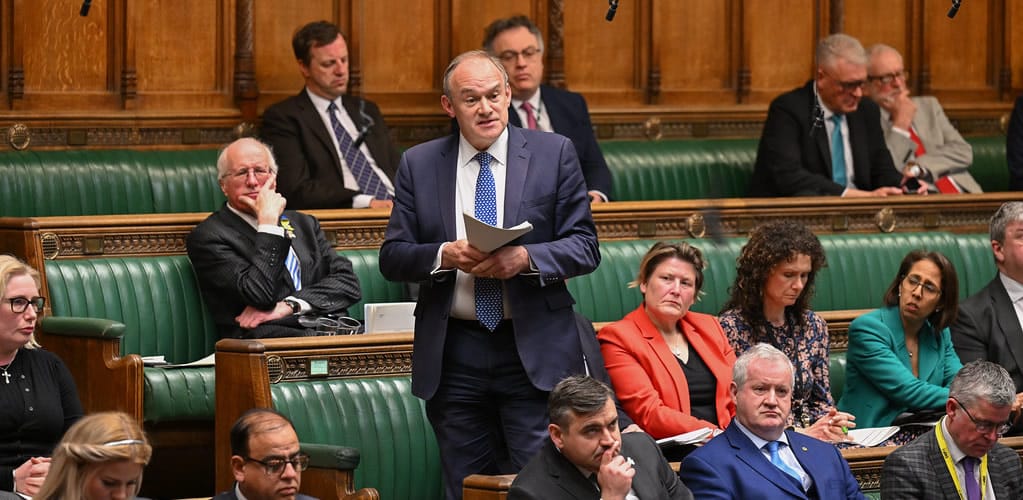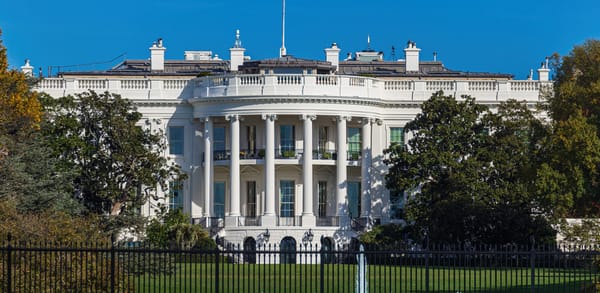What would a Reform surge do to Labour and the Liberal Democrats? Two scenarios mapped
Labour’s Keir Starmer and LibDem’s Ed Davey appear to have a tacit agreement to avoid campaigning against each other, focusing on defeating the Conservatives. The Reform party could further divide the Conservative vote and increase their chances in marginal seats.

L abour leader Keir Starmer and Liberal Democrat leader Ed Davey had what looked like a political strategy meeting when they were sitting together in Westminster Abbey for the Coronation of King Charles. This produced what appears to be a tacit agreement between the two parties to campaign against the Conservatives but not against each other.
A tacit agreement makes a great deal of sense in 2024. In the 2019 general election, the Liberal Democrats came second to the Conservatives in 80 seats and second to Labour in only nine seats. They weren’t much of a threat to Labour. If we look at the 11 seats won by the Liberal Democrats last time, the Conservatives were in second place in seven of them, with Labour second in none. Labour was not much of a threat to them either.
But how is this arrangement affected by the surge in support for Reform? We can examine this by looking at the electoral battleground using two scenarios.
The first looks at a plausible swing to Labour and the Liberal Democrats in the absence of a Reform surge. The second looks at what might happen given that Nigel Farage’s party is now neck and neck with the Conservatives in voting intentions, according to a recent YouGov poll.
Scenario 1: Without a Reform surge
Scenario one is a plausible sequence of events relating to Labour and Liberal Democrat seat gains across the regions of the country in the absence of a Reform surge. It lists the number of marginal seats in which Labour and the Liberal Democrats came second in 2019, and are therefore in the strongest position to defeat the Conservatives in 2024. In this scenario, a marginal seat is defined as the Conservative winner having a lead of 10% or less in the vote over their rivals.
In total, Labour was in second place in 56 of these marginal seats, and the Liberal Democrats in 15. When it comes to comparisons by regions, Labour dominated in the East Midlands, the north-east, the north-west, Scotland, Wales, the West Midlands and Yorkshire and Humberside. An electoral pact in these regions would be of little use to either party. But there are prospects for a deal in the east of England, London, the south-east and the south-west.
If we look at the case of London in the chart, then given the increase in support for the two parties in the polls, they have a good chance of winning in all seven of the seats where they are in second place. To clarify, Labour came second in the marginal seats of Chingford and Wood Green, Chipping Barnet, Hendon, and in Kensington in the 2019 election. The Liberal Democrats came second in Carshalton and Wallington, the City of Westminster, and in Wimbledon.
All seven seats are ripe to be taken by the two parties but the chances of this happening are increased by a tacit agreement in which Labour puts up a token candidate in the potential Liberal Democrat wins and the Liberal Democrats do the same in the potential Labour wins. This tacit agreement should be kept secret, of course; otherwise, it would be weaponised by the Conservatives.
— 2019 Conservative Seats with a 10% Lead over Labour/Lib Dems —

— Where Labour and the Lib Dems stand to gain from the Tories.
Scenario 2: The Reform insurgency
The assumption that marginal seats are defined as Conservative seats with a lead of up to 10% ahead of Labour and the Liberal Democrats in 2019 has been overturned by the rise in support for the Reform party. Seats with what were once considered healthy majorities are at risk.
In the last election, Nigel Farage withdrew Reform candidates (then standing under the banner of the Brexit Party) from Conservative seats with strong Brexit supporting MPs and fielded only 275 candidates altogether. This means that the party was not a real threat to the Tories in 2019.
This year, however, Reform is standing candidates in the vast majority of constituencies, making the Tories much more vulnerable. The YouGov poll which put Reform in the lead shows that 32% of 2019 Conservative voters have now switched to Reform. Only 6% of Labour voters have switched to Reform and only 3% of Liberal Democrats – so the Reform surge has shifted the battleground significantly in favour of both parties.
In the second scenario, we assume that Labour and the Liberal Democrats threaten the Tories in seats won by the party with up to a 20% lead over their rivals.
In seats falling into this category, Labour was in second place in 117 seats and the Liberal Democrats in 29. Labour was still dominant in the East Midlands, the north-west, Scotland, Wales, the West Midlands and Yorkshire and Humberside. However, the Liberal Democrats could do much better in the east, London, the south-east and the south-west.
If the two parties won all these seats, then Labour would have 321 seats and the Liberal Democrats 44 seats altogether as a result of adding them to the present total of their MPs in the Commons. That said, this figure ignores the effects of the nationalist parties in Scotland and Wales, both of which could contribute to Conservative losses. In practice, both Labour and the Liberal Democrats could do even better than this.
— 2019 Conservative Seats with a 20% Lead over Labour/Lib Dems —

— Where Labour and the Lib Dems stand to gain from the Tories.
These are just two scenarios, and so things could be different in reality. However, they highlight a unique feature of the current election. The centre-left has been divided since Labour replaced the Liberals as the main party of opposition in Britain after the First World War. This is the main reason why the Conservatives have been so successful in winning elections over the past century. The situation has now changed, with the centre-right divided. It is likely to have a devastating effect on the Conservatives on July 4.

Sources:
▪ This piece was originally published in The Conversation and re-published in PUBLIC SQUARE UK on 28 June 2024. | The author writes in a personal capacity.
▪ Cover: Flickr/UK Parliament. (Licensed under a Creative Commons Attribution-ShareAlike 4.0 International License.)







[Read our Comments Guidelines]